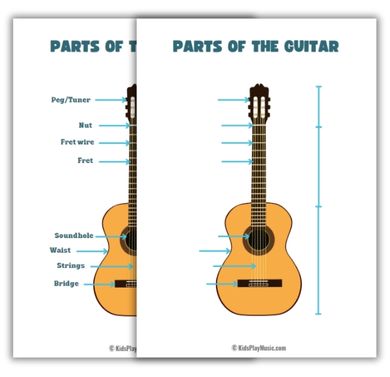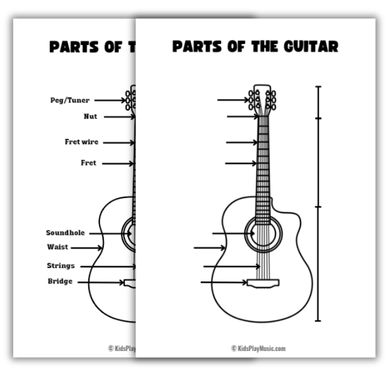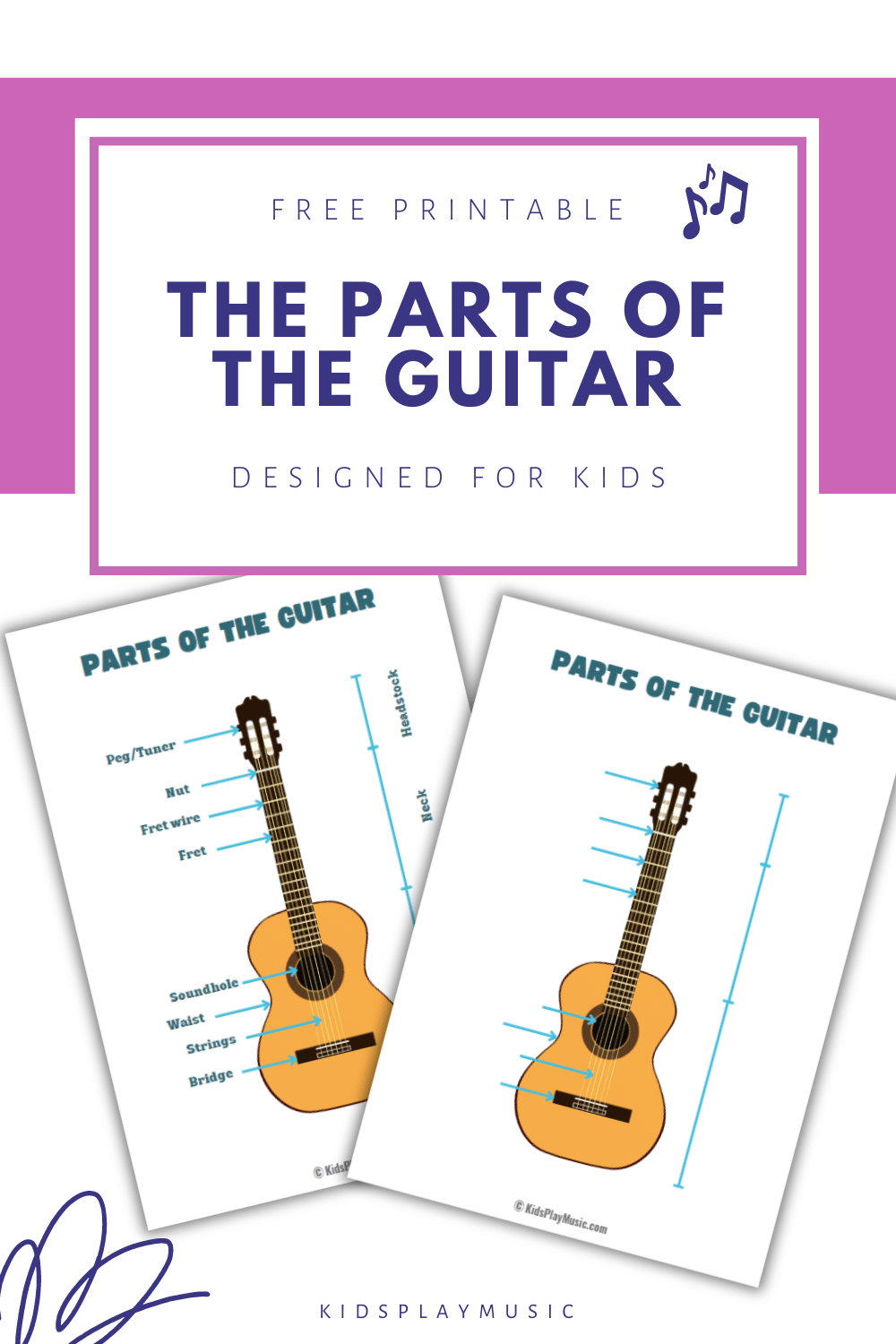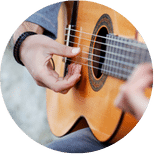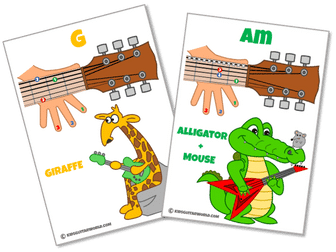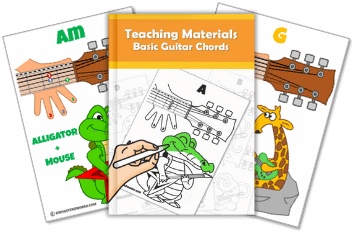The first thing you need to know before learning how to play the guitar is actually the parts of the guitar, or let’s say the anatomy of the guitar. Probably everyone can name a few parts of a guitar without any problems, but some of them are not so common. And it’s very important that the teacher and the student use the same words so that they know what they are talking about.
Young students should learn the parts carefully in order to memorize them well. You can show the guitar parts directly on your instrument. In addition, you can have a handout where students can see the parts as a reference and make an exercise. Such a worksheet is especially useful for students who can already read and write. At the end of the article you can download the guitar parts diagram for free in black and and white as well in color.
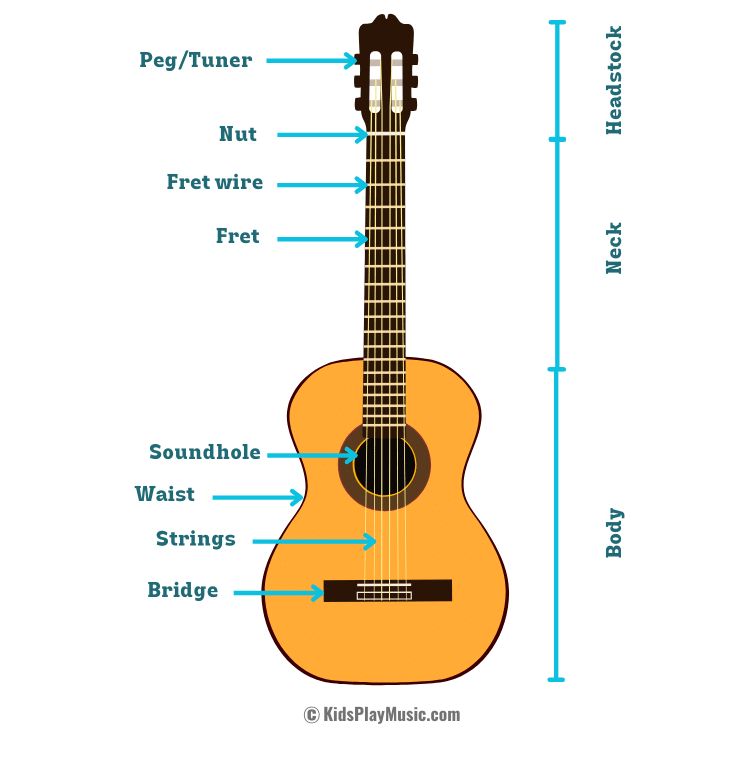
What are the parts of a guitar?
The three mains parts of a guitar are the headstock, the neck and the body. All other parts are placed on these three main parts.
9. Headstock
The headstock is at the end of the guitar’s neck and houses the tuners. It often bears the manufacturer’s logo and sometimes decorative inlays. The headstock’s shape and design can vary widely between different brands and models. One big difference between a classical and an acoustic guitar is the head. A classical guitar has an open head, while the steel string version has a closed head.
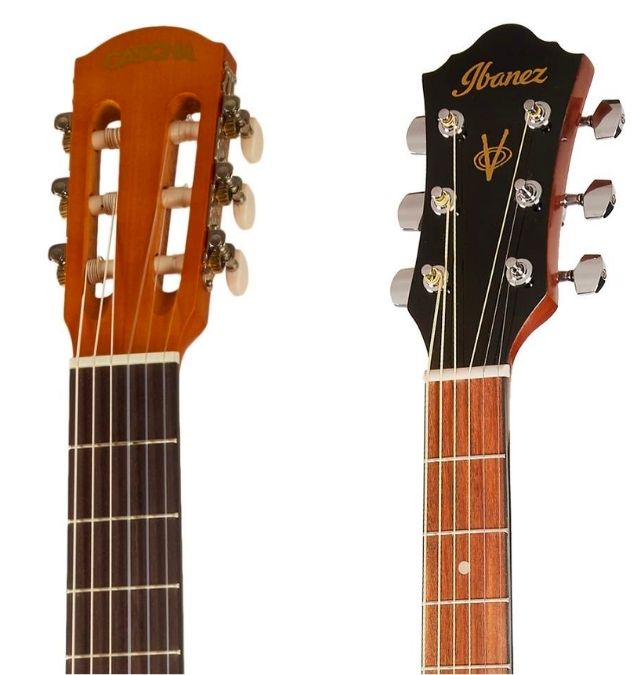
10. Neck
The neck of the guitar extends from the body to the headstock and includes the fretboard, frets, and truss rod (a metal rod inside the neck used to adjust its curvature). The neck’s profile and thickness can affect the playability and comfort of the guitar.
11. Body
The body of the guitar is the largest part of the instrument, which consists of the top, back, and sides. For classical and acoustic guitars, the body is hollow and amplifies the sound produced by the strings. The shape and size of the body influence the guitar’s tone and volume. For kids there are different guitar sizes available on the market.
1. Tuner
The tuners, also known as tuning pegs or machine heads, are located on the headstock. These are the mechanisms that tighten or loosen the strings to adjust their pitch. By turning the pegs, you can increase the tension to raise the pitch or decrease the tension to lower it. Proper tuning is essential for the guitar to sound correctly. Be careful, if you tune a string to tight, it can break. Beginners should use a tuner or a mobile app in order to tune every string correctly.
2. Nut
The nut is a small piece of hard material (often plastic) located where the headstock meets the neck. It has grooves that guide the strings from the tuners to the fretboard, ensuring they are spaced correctly and aligned properly. The nut also slightly raises the strings off the fretboard, which affects the instrument’s action and playability.
3. Fret Wire
Fret wires are thin metal strips embedded along the fretboard at specific intervals. They define the different notes along the guitar’s neck. Pressing a string against a fret wire shortens the vibrating length of the string, raising its pitch to a precise note.
4. Fret
A fret refers to the space between two fret wires. When a guitarist presses a string within a fret space, it changes the vibrating length of the string, producing different musical notes. The fretboard typically has markers (dots or inlays) on certain frets (usually the 3rd, 5th, 7th, 9th, 12th, etc.) to help players navigate the neck.
5. Soundhole
The soundhole is a large opening in the body of a classical and acoustic guitar. It amplifies the sound produced by the vibrating strings. As the strings vibrate, they transfer energy to the body of the guitar, which then resonates and projects the sound through the soundhole.
6. Waist
The waist of the guitar is the narrowest part of the body, located between the upper and lower bouts (the curved parts of the body). This design makes the guitar more comfortable to hold and play while also contributing to the instrument’s overall tone and resonance.
7. Strings
A standard guitar has six strings, each made from various materials like steel, nickel, or nylon. The strings are stretched from the tuners on the headstock, across the nut, along the fretboard, and over the soundhole or pickups, down to the bridge. The strings are tuned to specific pitches (E, A, D, G, B, e) and produce sound through their vibrations. It’s also important for beginners to know the names of the guitar strings.
8. Bridge
The bridge is located on the body of the guitar, below the soundhole on a guitar. It anchors the strings to the body and transfers their vibrations to the guitar’s top (soundboard), which amplifies the sound. On acoustic guitars, the bridge also holds the saddle, a small piece that supports the strings and affects their height and spacing.
Guitar Parts Diagram Printable
If you’re teaching guitar to kids, our printable is a great activity to use! It’s much easier to memorize guitar parts if your students write them down once on a guitar illustration. The PDF is available in both black and white and color. Both versions include a page with the parts already labeled and a blank page for students to label. You can also use this printable as a poster for your classroom or for the students at home!
